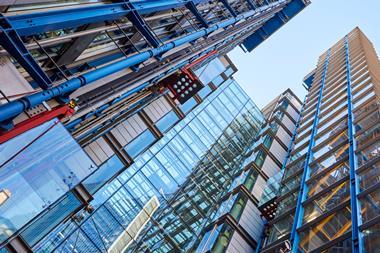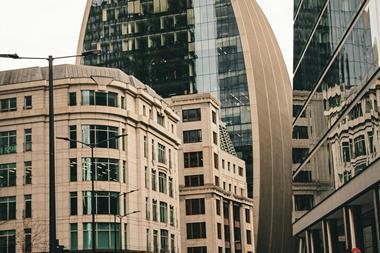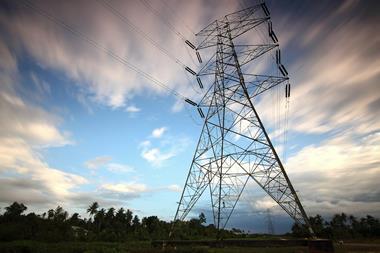While China and India have grabbed the headlines Asia's ‘tigers' still hold significant potential, writes Paul Benjamin
Before India and China really started to emerge over the past decade as economic superpowers in the region, the headlines of stellar growth in the east belonged to a diverse spread of much smaller countries nicknamed the Asian Tigers. The sunny growth they enjoyed over much of the 1990s took a mauling in the 1997 Asian currency crisis and - with varying degrees of success - they have been making a quiet and steady recovery ever since.
The Tigers include the two rich city-states of Singapore and Hong Kong, and the larger countries of Malaysia, Taiwan, Thailand and South Korea. It is a span that runs from the harsh winters of Seoul right to the perpetual mugginess of the equator, while linguistic, cultural and historical differences also divide them.
What does unite them at present is that the credit squeeze, which is dampening growth and enthusiasm in the US and western Europe, does not appear to be affecting their economies, and real estate growth is expected to remain buoyant over 2008.
While the Economist Intelligence Unit (EIU) sees global growth slowing slightly from 3.5% in 2007 to 2.9% this year, strong fundamentals in Asia, and a growing independence of many key Asian economies from US and western consumers, mean that the Asian Tigers will post growth above the global average.
Their strengths include high domestic savings rates, current account surpluses and healthy fiscal conditions. On the other hand, the region also faces inflationary pressure from wages and rising energy and commodity costs. Despite stronger domestic consumption, exports to the US and the rest of the world remain important and are likely to slow.
For property investors, the Asian Tigers remain attractive and, while they do not match Chinese and Indian growth rates, they do offer more transparent markets and more established infrastructure. According to Jones Lang LaSalle's transparency index, Hong Kong and Singapore are the more transparent, while Malaysia, Korea and Taiwan belong in a second tier - with the final two being closely aligned in transparency.
South Korea
The biggest market is South Korea, a hardworking, well-educated country of 57m people. Its economy continues to be heavily steered by the main ‘chaebol' superfirms such as Hyundai and Samsung, though a number of the weaker ones disappeared around the 1997 crisis.
Although it lacks the eye-popping GDP and retail growth figures of neighbouring China, the EIU sees steady GDP growth of 4.7% this year and next, and modest retail sales growth over 2008 of 2.8%.
Darren Krakowiak, head of research and consulting with Jones Lang LaSalle in Korea, expects a slight negative impact of the credit crunch, shaving 0.3-0.4% off GDP growth, but recognises that a hit is inevitable, given that the US accounts for an eighth of all export sales.
He adds: "Unemployment has continued to fall, domestic demand has picked up and a series of rate rises haven't dampened spending; 2008 could be a stronger year than 2006, with 2007 seen as a recovery year."
Seoul, which holds three main office districts, reported patchy growth in office rents in 2007, with year-on-year growth up 2.7%. Vacancy rates fell to just 0.4% in the central business district, but yields were squeezed heavily over 2007 because of the high volume of funds chasing limited opportunities.
However, JLL predicts a stronger 2008 with growth in yields and capital, as an acute shortage of quality office space, a growing tendency to lease instead of own, and better transparency all put more of a premium on quality offices.
This sentiment is echoed by CB Richard Ellis, which predicts that investor interest will remain strong enough to spill over into logistics and warehousing, and office space in secondary areas.
The lack of decent office space has moved some investors to look into retail. However, Krakowiak cautions: "From an investor perspective, it remains tightly held by the chaebol. Opportunities remain very limited apart from in mixed-use developments and new cities, and then often involve partnership with a local developer."
South Korea is a rugged, hilly nation with a handful of sizeable cities, like the major port of Pusan, and the industrial inland city of Taejon. While these cities are strong regional centres, they are of less interest to the international investor, whose likely focus is the country's totally dominant capital city, Seoul, its satellite towns, and the nearby major port of Inchon.
Krakowiak says: "Satellite cities in greater Seoul are attractive because of lower land costs and improving infrastructure. Bundang in Seongnam City has been strongly pushed by the government since 2000, and has seen relocation of IT-based firms and back-office functions. There's also a lot of growth in residential developments and some companies find that their workforce already lives out there."
The nation's only land border is shared with its estranged sibling, North Korea, which, although a threat on the geopolitical stage, does not influence investor decision-making. "I've never had anyone ask me about North Korea," says Krakowiak, "If they'd had concerns it would've been a deal breaker from the start. There is more dialogue between north and south, and South Koreans have a strong interest in increasing GDP there. It's a potential market."
In late February, the new president, Lee Myung-Bak, was inaugurated, and analysts believe his arrival will lift the real estate industry. Lee is nicknamed ‘The Bulldozer' because of his ability to drive his pro-business vision through the legislative process, while he aims to boost economic capacity and raise foreign investment. Antiquated laws, including some that cover real estate, are also earmarked for reform.
Despite South Korea's ageing demographics, Krakowiak believes the country has yet to hit its peak. "Korean GDP is around two-thirds of what it could be," he says. "It still has a long way to go. It has been described as a shrimp among whales with Japan on one side and China on the other. Because of that, it is under the radar and investors who do come here can find that can be an advantage."
Malaysia
While South Korea is one of the most ethnically homogenous nations on the planet, Malaysia is one of the most diverse, with a population of 25m made up of Malays, Chinese and Indian, although recent demonstrations reflect ongoing ethnic tensions.
Malaysia looks solid for 2008. The EIU puts GDP growth at 5.7%, which is the highest of any Asian Tiger, and expects retail sales growth to hit 4.8%. Simon Treacy, CEO of Macquarie GPA, agrees: "Malaysia has been the most overlooked and undervalued country in the region for the last three to four years. The new government is very pro foreign investment and is revitalising what became a morbid story under former PM Dr Mahathir.
"Malaysian REITs have come from nowhere and there are now 11 of them. Performance is quite good and governance is acceptable. The office sector is a standout and has very good fundamentals. Vacancies are falling and rents are rising against strong demand."
C H Williams Talhar and Wong echo these thoughts, and report that the prime office vacancy rate dropped to 7.5% in 2007 Q4, describing the outlook as "bullish" for capital values, especially since only five new office buildings are due to come online in 2008.
Chris Boyd, chairman, of Regroup Associates, says: "The office market took approximately nine years to recover from the oversupply that hit in 1998 just after the Asian crisis, when 30% of capacity was empty. That has worked itself out, partly because of a freeze on building, but also because of strong growth in the services industry. Rents are firming up so it's a good time to get in. Indeed, many people are now buying off plan."
Retail space has grown significantly over the past decade, and in the saturated Klang Valley - the commuter belt out of the capital, Kuala Lumpur, where some 5.8m people live - a net lettable area of 20.43m ft2 in 1998 is set to reach 39.86m ft2 this year. Developers still seem more keen to operate in the crowded KL/Klang market rather than explore more profitable options elsewhere, such as Kuching.
Alan Soo, managing director of Regroup Associates, says: "Locally, liquidity is high and REITs are still actively in the market. A lot of funds are trying to acquire retail spaces, but the good ones are not selling - the REITs did their homework long ago. Not much new supply is coming up this year. Some of the older centres are repositioning opportunities, and there are still pockets of opportunity left in the suburban market."
A key factor behind retail growth has been a successful tourism industry, and a winning year in 2007 for the government's ‘Visit Malaysia' drive.
Treacy adds: "The in-bound travel figures are striking. There's a very large, modern airport and a lot of the tourism growth is from the Middle East. Hotels are very cheap and, in retail terms, although not culturally, it is a better destination than Bangkok."
Much of the eastern seaboard of peninsular Malaysia is rural, and domestic developer interest outside of KL goes to the northern island of Penang, and Johor Bahru, which sits right opposite wealthy Singapore.
Neither Macquarie GPA nor Regroup Associates seemed particularly excited about options outside KL, and Treacy says: "Penang and Johor Bahru are much further down the line. We are seeing no office market of note, mainly industrial, residential and light retail formats."
Soo points out: "It's difficult to sell mid to upper-market offerings in Johor Bahru. If you live in Johor Bahru and you have the money, then you go shopping in Singapore."
But with the government keen to turn both Penang and Johor Bahru into regional growth hubs, more interest may develop.
Boyd sees another angle though. "The next big thing is going to be luxury resort villas in places like Penang, Kota Kinabalu and Langkawi."
Taiwan
International tourists are a rarity on the island of sub-tropical Taiwan, which is still locked in a diplomatic stalemate with China about its identity and possible independence.
The nationalists may have fled here when Chairman Mao's communists took over China, but today's relatively wealthy Taiwan, with a population of 23m, has been behind a good chunk of investment into the mainland.
As Taiwan's competitive advantage as a manufacturing centre for lower-order products has shifted back over the past few decades to China, so the gap has been filled by higher-end manufacturing, particularly IT hardware and consumer electronics.
Tony Chao, managing director of Jones Lang LaSalle Taipei, says: "The market in Taipei right now is very hot and is set to get hotter after the presidential elections in late March.
"The policy to China has so far been too conservative. The whole world is doing business with China but there's a feeling that Taiwan hasn't really opened the door. We've got to change that policy, and the current KMT party candidate looks like winning the election and doing so."
The EIU sees GDP growth slowing from a healthy 4.6% this year to 3.9% in 2009, but the job market is growing and industrial production is healthy at 5.0% over 2008, even if retail sales growth is flatter at 1.5%. In short, Taiwan's strong manufacturing base should see it through.
For international investors, much of the interest lies in Taiwan's office space, which, in the late 1990s, was given a huge shot in the arm by government auctions of state-owned land in the Xinyi Planned Area, which is to the east of Taiwan's central business district and the longer-established DunHua Road office area. The Xinyi land was vital, as developers were becoming frustrated by the acute lack of integrated lots available for large-scale development in central Taipei.
Xinyi now hosts the world's second-tallest building at 508m, Taipei 101, and Jones Lang LaSalle predicts rising rents and capital value over 2008 as demand for quality offices stays high, although more A-grade office supply is due to be completed in 2009, which will increase competition.
In 2007 Q4 Xinyi posted healthy annual rent growth of 13.6% and capital value growth of 23.5%. This compares strongly with the Dunhua North office area, where comparable rental growth was only 0.5%.
CB Richard Ellis believes the Xinyi area will continue to build up steam, representing a true shift of Taipei's business hub, as the government has allied the office area with Neihu Technology Park and Nangang Software Park. This triangle of growth is seeing infrastructural investment and a number of incentives, including land tax exemptions and staff training subsidies.
Chao adds: "The city is shifting to the east but the original central business district round the train station will also see growth, especially as infrastructure improvements there are completed.
"Residential sites are more expensive than their office equivalents, as many rich Taiwanese businessmen are choosing to buy locally rather than invest in Hong Kong or Singapore. We don't think that sector will grow much in 2008."
Taipei, the capital city of some six million, dominates the market for international real estate interest, although the mountainous island does have two other centres of note - the port city of Kaohsiung in the south, and regional capital of Taichung. Chao says Kaohsiung is in population terms the island's second city. "Prices there are close to construction cost and there is not a lot of interest. But it's an important port and more trade with China could see this dead man walk again."
Overall, the economic fundamentals for 2008 and 2009 suggest that the Asian Tigers, while not roaring quite how they once did, are far from being an endangered species.
Big deal hunters should take note.












